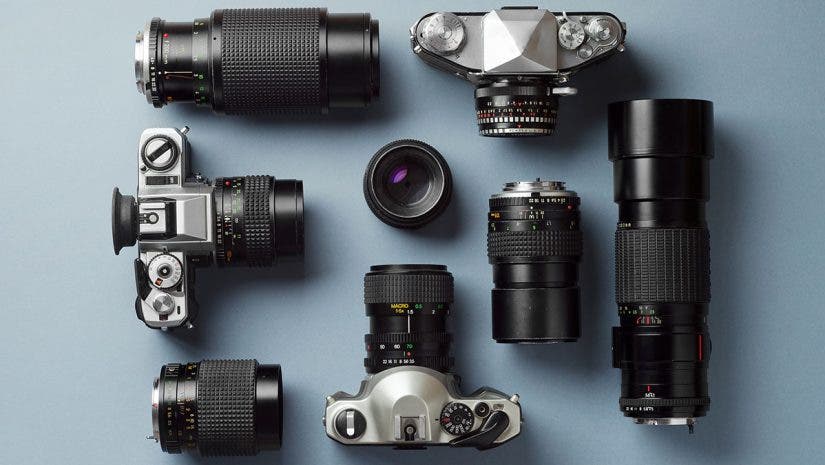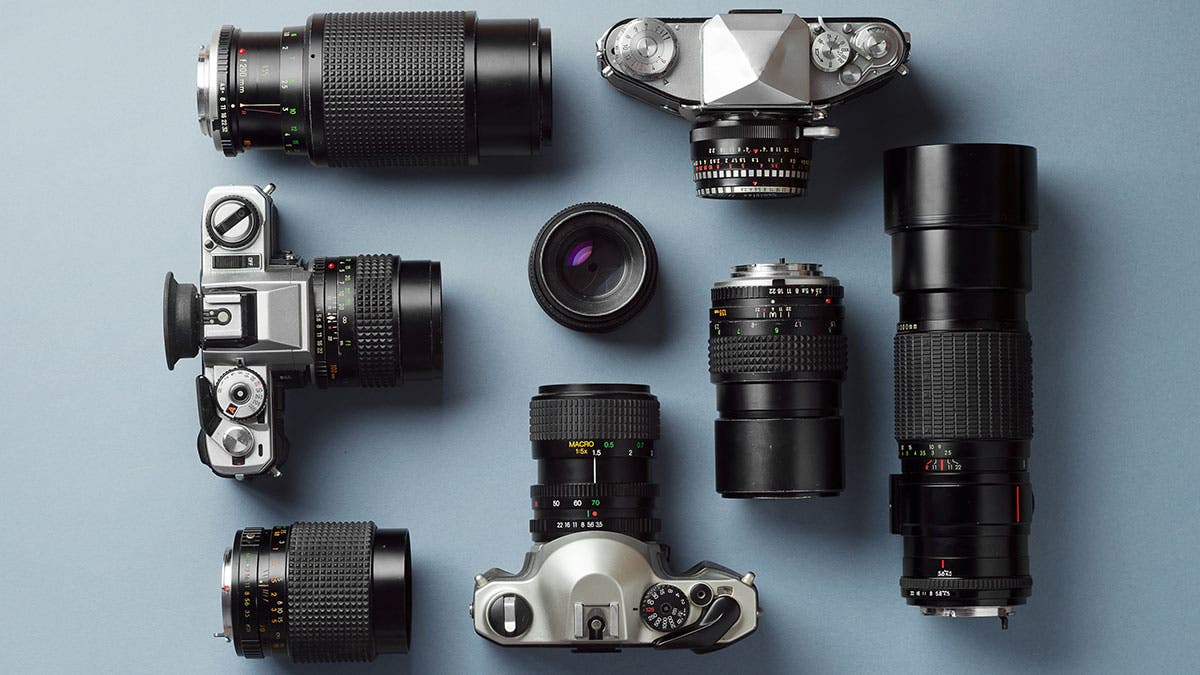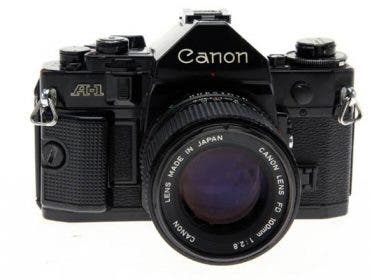You’re on a tight budget, but want to buy a digital camera for yourself, a family member, or a friend. You’ve already looked at new digital cameras that are in your price range only to discover that the compromises you are forced to make in order to stay within your budget doesn’t leave you with the kind of camera you want. The good news? You have other options: used, refurbished, open box, or last year’s camera models.
In each case, you can save a considerable amount over buying a brand-new, off-the-shelf camera. This also holds true for lenses, flashes, and some other accessories. But what are the differences and advantages and disadvantages of each option?
Used Cameras
Pros:
- There are lots of them
- You can find the best deals here
Cons:
- Conditions vary, so you need to shop carefully
- Mostly older models, not the latest technology
- If they break, you’re on your own
It may look ugly, but a scratched-up Canon 5D Mark II, with its black finish wearing off here and there, works perfectly, and costs a lot less than the latest model in pristine condition.
The most common budget approach is to buy a used camera. This means you probably won’t buy the current model, but the cameras that were sold a year or two ago (or perhaps earlier) will cost considerably less than the current version, and will still produce fine photos, assuming the camera has been treated well.
But here’s the rub: How do you know if the used camera you have your eye on is in good enough condition? Most used camera sellers use a letter-based rating system; Adorama adheres to this condition scale.
Basically, you can save a fair amount of money if you’re willing to accept a fully functioning camera or lens with some cosmetic wear and tear (E or V, the latter showing more dings, scrapes, brassing and scratches). Adorama clearly indicates a used camera’s condition.
Used Camera Savings Examples
The following are all examples of different cameras with different quality ratings and prices. The point is to further explain how the rating and the camera’s condition may impact its price.
- The Nikon D3100 for $149 has an E- rating, so expect some scratches and dings. Still, it’s a worthwhile purchase.
- What about the $95 Canon EOS 20D? It has a V rating—still usable, but it’s going to be more banged up.
- The Pentax K-50 for $84 has an F rating; it has a flickering LCD screen and a scratched sensor, so you probably don’t want that model. On the other hand, you can pick up a K-30 in E condition with the same 16MP sensor, for $269, which is still a very good deal.
- That Canon 5D Mark II for $899? It is in V condition, so it has been used a lot, but it functions fully. It’s a good choice for an aspiring pro who can’t afford a new full-frame camera.
- How about that crazy cheap $18 Fujifilm Finepix S2 Pro? That has a used rating of X, which means it doesn’t work—it’s being sold for parts. A worn but working version of the camera with an E- rating is still a steal at $74 if you don’t mind the older technology.
The bottom line? Read descriptions carefully, know what the ratings mean, and you may end up with a lot of camera for relatively little money. An extended warranty will cover you if your equipment breaks down, and unlike new gear which is already under the manufacturer’s warranty, this protection may be a worthwhile investment. If appearances are as important as functionality, though, you may want to go for a demo or refurb.
How to find it:
Go to Adorama’s Used Camera Department.
Last Year’s Model
Pros:
- Bargain-priced so they’ll get sold quickly
- Great image quality
- They’re new cameras
Cons:
- Choices are relatively limited
- You need to know which is the latest model—and what it replaced
If used gear seems too old or risky—or you’re giving a gift and it would be tacky to give a used camera—consider recently discontinued models. These are typically cameras that were introduced within the last two years or so, and have been replaced by newer models.
They may not have the very latest technology, but are still perfectly good cameras. For instance, in 2015, what we refer to as “last year’s model” may not have Full HD video or WiFi, but it will have a sensor that will deliver outstanding image quality, and probably records HD video.
For instance: Let’s say you want to buy a Nikon starter digital SLR camera or a Canon DSLR. Both Nikon and Canon have halted development on new DSLR models, so purchasing a DSLR camera body by either brand will become more and more affordable as time goes on. The most recent Canon Rebel was the model T8i, so you could purchase the Rebel SL3 instead and save some money.
You can find similar budget-busters among mirrorless cameras. Older mirrorless models with APS-C or micro four-thirds sensors like the Canon EOS M100 or the Nikon Z50 offer extensive features at a lower price.
On the higher end, the Sony Alpha A7, A7R, A7S, and A7C series have undergone rapid changes, and the older models deliver stunning results but their prices have been dropped.
Finally, there are compact cameras. Scroll around and you may find closeout products that offer all the features and perks that you want, but at a much lower price than their full-fledged, much more expensive cousins.
How to find it:
When scrolling down the list of cameras on the Adorama website, look for things like “Kit Discount” or “Closeout” and you’re sure to find some good deals. Remember that once a discounted item is sold out it won’t be replaced until its successor gets old. So, if you see a deal, grab it!
Refurbished Camera
Pros
- Good deals
- Manufacturer’s warranty
- New or recent models
Cons
- Very limited supply
Refurbished cameras are gently used, demos, or open-box models that were returned to and checked by the manufacturer by hand, inspected carefully, diagnosed, and calibrated at their repair facility. They could be more dependable than new cameras because they’ve all been hand checked.
Refurbished models are generally shipped with the latest firmware updates that were available at the time the unit was in the factory. When a batch of these are available, the manufacturer contacts Adorama and makes them available to our customers.
You can save hundreds of dollars by purchasing a refurbished camera. In most cases they are new or recent models, and they carry a 90-day warranty. Models that are available change frequently, and only some manufacturers offer refurbished models.
How to find it:
When you’re looking for cameras, scroll down and look for the “Filter By” tab on the left side, and select refurbished. This will show you all refurbs at a glance.
Open Box
Pros:
- Generally in good condition
- Lots of cool gadgets for cheap
Cons:
- Very few cameras available
You may be wondering: What does “Open Box” mean? These products may have been used as display items, used in training for Adorama’s sales staff, or returned by a customer without the original packaging, accessories, or manuals.
You probably won’t find many cameras amongst Open Box products, but there are a ton of random accessories.
How to find it: You can find Open Box products in Adorama’s Open Box department.
Second-Hand Camera Shopping Tips
If you’re looking for a second-hand camera body for shooting stills and recording video, there are a few important steps you can take to make sure you buy the highest quality equipment.
For starters, purchasing a camera or camera accessories from an online marketplace may seem convenient and inexpensive, but it’s not necessarily the safest or most reliable option. Instead, consider shopping with a retailer like Adorama; we provide a 1-year warranty on used equipment.
1. Camera Life Expectancy
The first thing that wears out on most cameras is the shutter. All cameras are designed with a certain number of expected shutter actuations. After reaching that shutter rating, you may need to repair or replace the shutter mechanism to keep the camera body in good working order.
If you’re considering buying a used camera body, start by looking up the standard shutter life expectancy for that camera. Most camera shutter ratings are readily available with a quick internet search. Next, check the used camera’s shutter count by uploading a recent photograph with EXIF data to camerashuttercount.com.
Beyond shutter count, you should also check the quality of a camera body’s internal image stabilization, auto-focus motor, and electronic connection points. If you’re purchasing a camera body only, make sure to bring a compatible lens and a few memory cards to fully test the camera’s functions.
2. Review Any Obvious Damage
Camera damage can be found in a few common areas, but there are a few less obvious ones to check as well.
For starters, look over the camera body for cracks, deep scratches, or signs of previous impacts and drops. Issues like cracked screens, gouges, and dents are important to note, because they may indicate internal damage that could result in operational problems.
A scratched camera screen isn’t necessarily a deal breaker, but a crack on a touchscreen or dead pixels may cause functional problems.
Make sure to try more than one lens on the camera, and turn the camera on to ensure the lens contact points and electronics function properly. Test all buttons so you can see if they engage the appropriate menus.
Check the sensor for obvious scratches, gouges, or other types of damage. Take a few test shots of a white wall and look for signs of defects or damage in the images.
3. Check Shutter Count
Shutter count is an important consideration for second-hand camera purchases. Hopefully you can find a camera that’s in good condition and still has at least 50% of its shutter life left.
If you want to double check the shutter count, there are a few websites and apps to choose from. Canon’s own EOS Utility software makes this info easy to find. Connect the Canon camera to a computer using a USB cable, open the EOS Utility app, and look for “Shutter Count” or “Actuation” data.
For other camera manufacturers like Nikon, Sony, or Fuji, third-party software is often the best bet. You may need to upload a recent photograph taken by the used camera with intact EXIF data to access the camera’s shutter count.
No matter what your shutter count search tells you, remember that shutters are often replaceable by an approved repair center. If a shutter is toward the end of its lifespan, take the cost of repair into consideration when making an offer for the camera.
4. Price
It’s worth repeating: pay close attention to the cost when you’re buying a used camera. The last thing you want is to shell out hard cash on a faulty camera.
When purchasing from an individual, take physical damage, shutter count, and the age and datedness of the camera model into account. Also remember that if a camera is refurbished by a third party, you can’t guarantee the quality of the repairs, so you’ll want to pay a more modest price.
5. Return Policy
When it comes to online marketplaces on social media or apps, you don’t have much protection as a buyer. That’s why it’s always a good idea to shop for used gear with a trusted retailer who offers a reassuring return policy. At Adorama, our used department offers a 30-day, no-questions-asked return policy to protect customers.
Is It a Good Idea to Buy a Second-Hand Camera?
Second-hand cameras can be a terrific option when you want to upgrade without an upgraded price tag. While it’s always a nice feeling to get your hands on a brand-new camera in a factory-sealed box, the most important factor is the camera’s functionality and ability to take high-quality photographs.
The money you save by selecting a used camera can help you pay for new lenses, tripods, and other key photographic equipment. As long as you physically inspect and try out the camera you intend to buy, there’s no reason to avoid purchasing a second-hand camera in the future.






